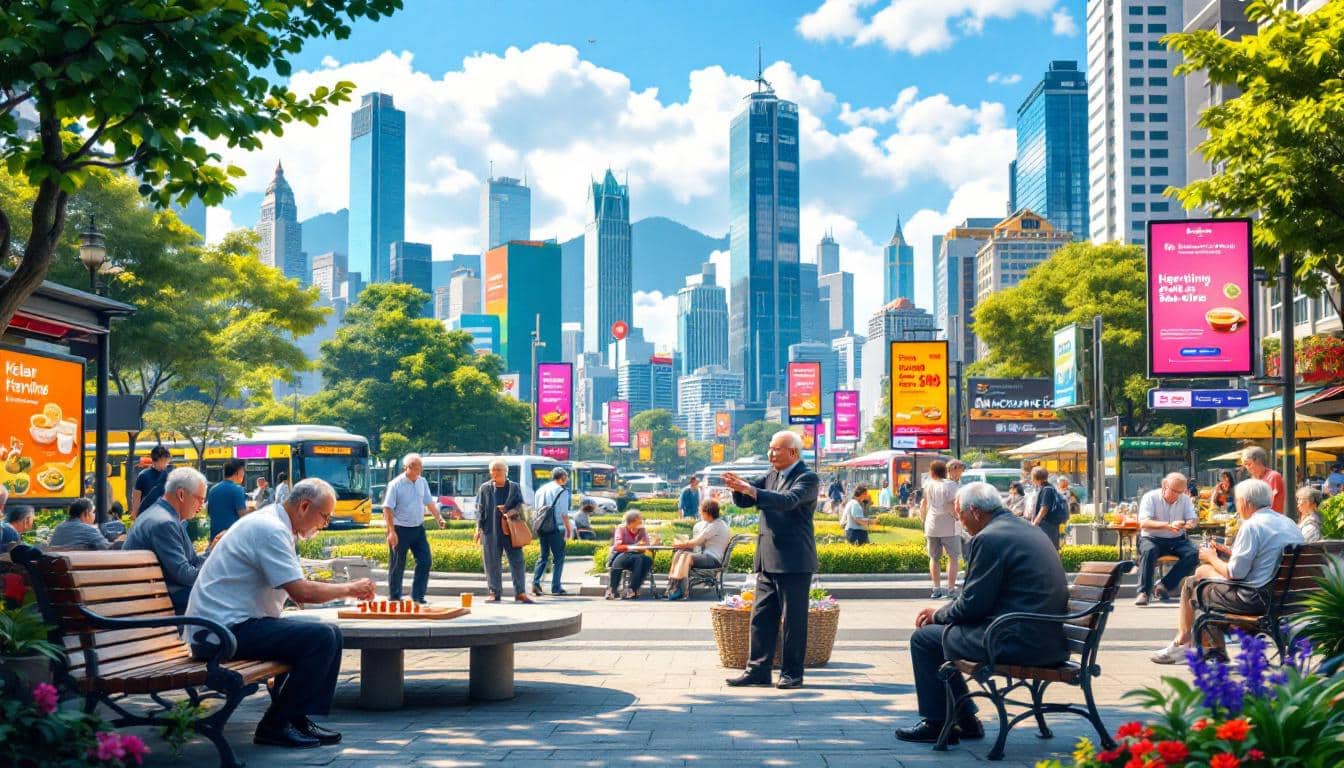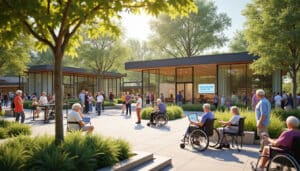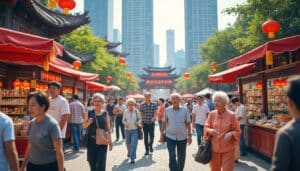We use cookies and data to provide and maintain Google services.
These tools allow us to track outages and protect against spam, fraud, and abuse.
They measure public engagement and site statistics to understand the use of our services and improve their quality.
When you choose to “Accept all,” we also use cookies to develop new services, measure the effectiveness of advertisements, and display personalized content according to your settings. Conversely, if you opt for “Reject all,” these additional uses of cookies will not be activated. Non-personalized content is influenced by elements such as the pages you visit, your search activity, and your general location. Additionally, we tailor the experience to be age-appropriate when relevant.

Introduction to the Aging Population in Hong Kong
The aging population in Hong Kong is a major demographic phenomenon that profoundly redefines the society and economy of the region. With a constantly increasing life expectancy and a declining birth rate, Hong Kong is facing a rapid demographic transition. This evolution has significant repercussions on various aspects of daily life, public policies, and economic dynamics. Understanding the implications of this aging is essential to anticipate future challenges and seize the opportunities presented by this transformation.
What are the economic impacts of demographic aging?
The aging population has deep consequences for the economy of Hong Kong. On one hand, the shrinking working-age population can lead to decreased productivity and increased costs related to pensions and healthcare. On the other hand, it paves the way for the silver economy, a rapidly growing sector focused on the needs and services for the elderly. According to a study by the IMF, the silver economy represents a significant economic opportunity, with substantial profit possibilities in areas such as health technologies, wellness services, and adapted leisure activities.
Furthermore, the aging population stimulates innovation in medical technologies and housing solutions tailored to seniors. Companies that invest in these sectors can not only meet a growing demand but also benefit from sustained growth. For example, the development of smart homes and in-home health monitoring systems is booming, offering practical and secure solutions for the elderly.
How does aging redefine Hong Kong society?
The demographic transformation profoundly influences the social structure of Hong Kong. With a growing proportion of elderly individuals, family dynamics, community support structures, and intergenerational interactions are evolving. Families must adapt to new realities, with fewer active members to support the elderly. This reinforces the importance of public services and community initiatives aimed at ensuring the well-being of seniors.
Moreover, the aging population changes social priorities, emphasizing accessibility, quality healthcare, and suitable infrastructure. Initiatives such as the 30 government initiatives demonstrate Hong Kong’s commitment to addressing the specific needs of its aging population. These measures include creating day centers, improving public transport for individuals with reduced mobility, and promoting the social inclusion of seniors.
What initiatives has the Hong Kong government implemented?
In the face of the challenge posed by demographic aging, the Hong Kong government has implemented numerous initiatives to boost the silver economy and improve the quality of life for seniors. Among these initiatives are financial support programs, grants for businesses investing in services for the elderly, and awareness campaigns on the importance of active aging.
A notable example is the launch of community projects aimed at creating more welcoming environments for the elderly. Additionally, the government supports vocational training for geriatric care workers, ensuring high-quality service. These efforts are crucial for creating a supportive ecosystem where seniors can live independently and enriching lives. To learn more about these initiatives, check out this detailed article.
What opportunities exist for the silver economy in Hong Kong?
The silver economy in Hong Kong presents numerous opportunities for entrepreneurs and investors. With an aging population, the demand for specific products and services is increasing, creating a lucrative market. Sectors such as health technologies, wellness services, medical tourism, and adapted leisure activities are experiencing rapid growth.
Businesses can capitalize on these opportunities by developing innovative solutions that meet the needs of seniors. For example, mobile applications that facilitate access to healthcare, platforms connecting caregivers with the elderly, or personalized transportation services are all promising areas. For an in-depth analysis of aging-focused actions, this article offers interesting insights.
What are the captivating stories of aging in China?
Personal stories poignantly illustrate the challenges and successes associated with the aging population. Through captivating narratives, we discover how individuals and families adapt to this new reality. These testimonies highlight resilience, innovation, and solidarity within the community. Hong Kong is not isolated in this movement, as cities across China are experiencing similar transformations. This article presents various inspiring stories of elderly individuals who have found new passions, strengthened their social networks, and actively contributed to society.
These stories emphasize the importance of promoting active aging and creating opportunities for everyone to continue to thrive, regardless of age. By sharing these experiences, we encourage a positive vision of aging, where seniors are seen as valuable assets rather than burdens.
How does the aging population influence the labor market?
The aging population has significant repercussions on the labor market in Hong Kong. With a dwindling workforce and a decrease in the number of young entrants, businesses are facing challenges in recruiting and retaining talent. This urges organizations to rethink their human resource management strategies, emphasizing continuous training and adapting work environments for older employees.
In response, many companies are implementing programs to value the experience and skills of senior employees. Furthermore, automation and advanced technologies are becoming essential tools to compensate for the declining workforce. The government also supports this sector by encouraging partnerships between businesses and educational institutions to prepare a workforce that meets future needs.
What is the importance of aging-friendly infrastructure?
Infrastructure plays a crucial role in adapting society to the aging population. In Hong Kong, this means creating accessible housing, adapted public transport, and safe, friendly public spaces for the elderly. Emphasizing inclusive infrastructure not only enhances the quality of life for seniors but also promotes their active participation in the community.
Initiatives such as renovating residential neighborhoods to include elevators, ramps, and adapted sanitary facilities are essential. Additionally, the development of community centers offering social activities, health services, and meeting spaces helps strengthen social fabric and reduce isolation among the elderly.
For a detailed approach to aging-friendly infrastructure, this article explores the measures taken by the Hong Kong government to address these needs.










